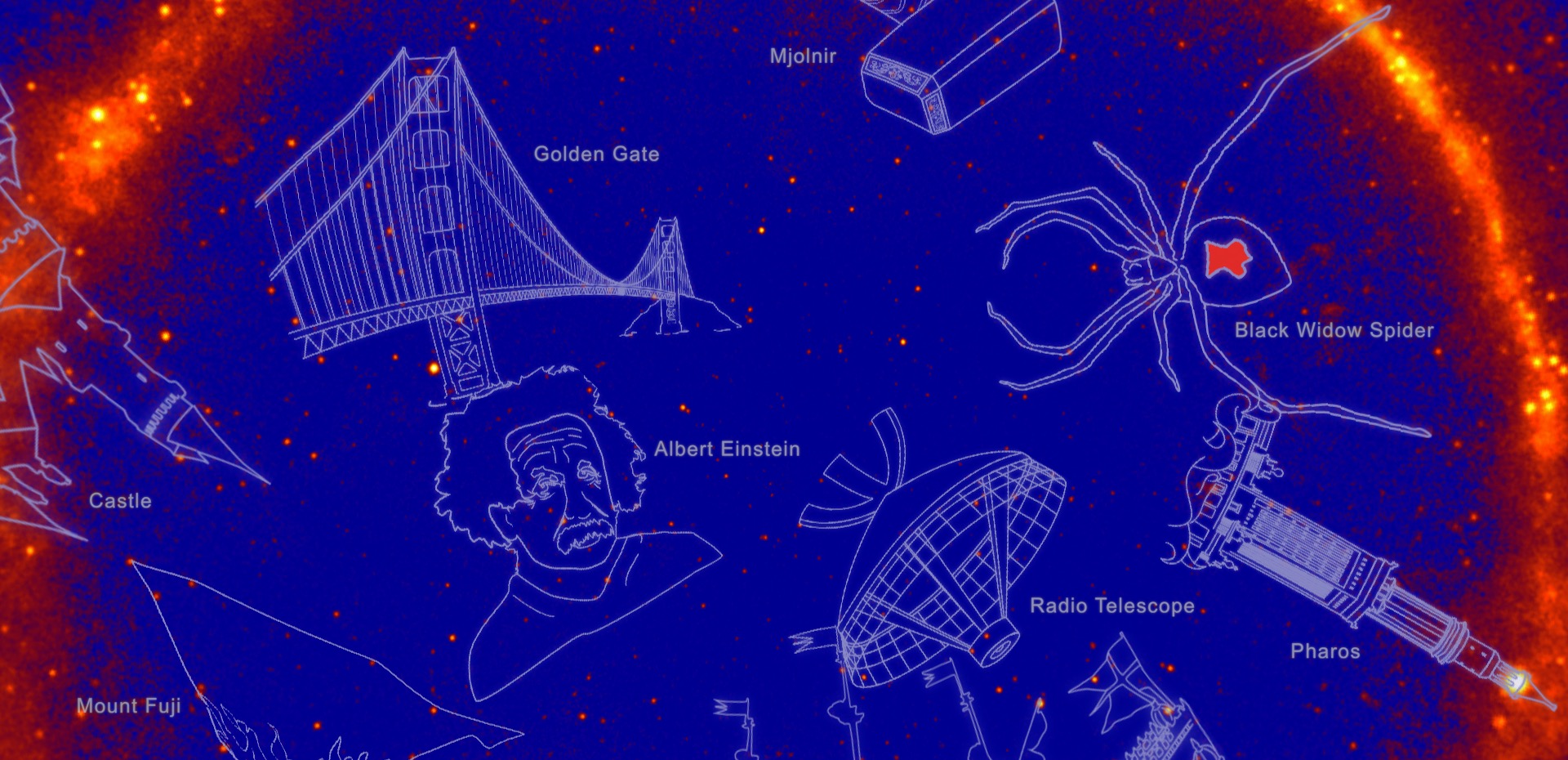Einstein and the Incredible Hulk Now Have Their Own Constellations (But You'll Never See Them)

For thousands of years, humans have looked up at the stars and ordered them into constellations: the Hulk ... the TARDIS ... Schrödinger's cat.
Not familiar with these? That's probably because you can't see them without a gamma-ray telescope — and also, NASA just invented them.
To highlight the first decade of discoveries recorded by NASA's Fermi Gamma-Ray Space Telescope, U.S. astronomers have connected the dots on the universe's invisible sources of gamma-ray energy. This allowed the researchers to map 21 brand-new constellations onto the celestial sphere. You won't see these shapes in the night sky; despite being the universe's most powerful sources of light, gamma-rays are invisible to human eyes. But you can see the shapes all on a new interactive website crafted by NASA scientists and artist Aurore Simonnet, of Sonoma State University in California. [11 Fascinating Facts About Our Milky Way Galaxy]
"Developing these unofficial constellations was a fun way to highlight a decade of Fermi's accomplishments," Julie McEnery, a Fermi project scientist and an astrophysicist at NASA's Goddard Space Flight Center in Greenbelt, Maryland, said in a statement. "One way or another, all of the gamma-ray constellations have a tie-in to Fermi science."
Since it was deployed in 2008, the Fermi telescope has been scouring the cosmos for sources of gamma-rays. These high-powered rays are invisible to us but hurtle constantly across space. They shine out of exploding stars, strobe off of spinning pulsars and radiate from the edges of unfathomably powerful black holes at the centers of distant galaxies. (According to NASA, about half of the universe's known gamma-ray sources fit into that last category.)
Within seven years of the telescope's deployment, Fermi had already mapped about 3,000 previously unknown sources of gamma energy exploding across the sky — about 10 times the number of sources known prior to the mission, according to NASA.
Get the Space.com Newsletter
Breaking space news, the latest updates on rocket launches, skywatching events and more!
Now cobbled into ersatz constellations, these gamma blasts take the form of world landmarks (like the Eiffel Tower and the Roman Colosseum), sci-fi spacecraft (like the starship Enterprise from "Star Trek" and "Doctor Who's" time-traveling TARDIS), and homages to icons of science like Einstein and the cardboard box that contains Erwin Schrödinger's living/dead cat. Perhaps the most elegant marriage of medium and message is the constellation of the Hulk, who owes his famous viridescent bod to a gamma-ray experiment gone wrong.
Stargaze at all these new patterns in the sky — and see where they fall in relation to the 88 visible-light constellations we know and love — right here.
Originally published on Live Science.
Join our Space Forums to keep talking space on the latest missions, night sky and more! And if you have a news tip, correction or comment, let us know at: community@space.com.

Brandon has been a senior writer at Live Science since 2017, and was formerly a staff writer and editor at Reader's Digest magazine. His writing has appeared in The Washington Post, CBS.com, the Richard Dawkins Foundation website and other outlets. He holds a bachelor's degree in creative writing from the University of Arizona, with minors in journalism and media arts. He enjoys writing most about space, geoscience and the mysteries of the universe.










